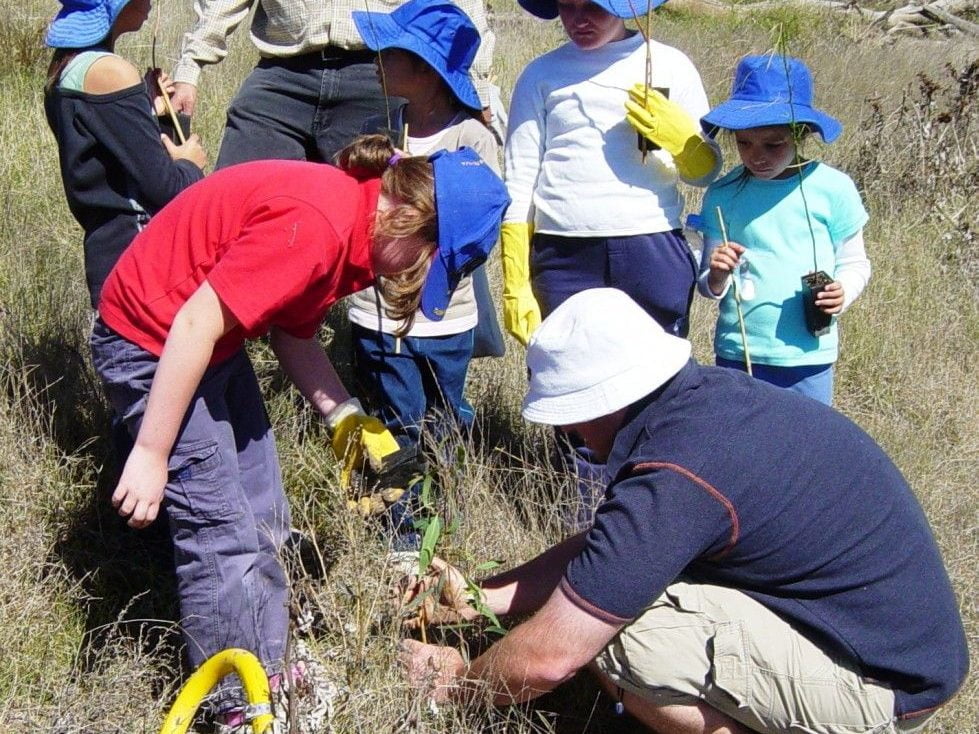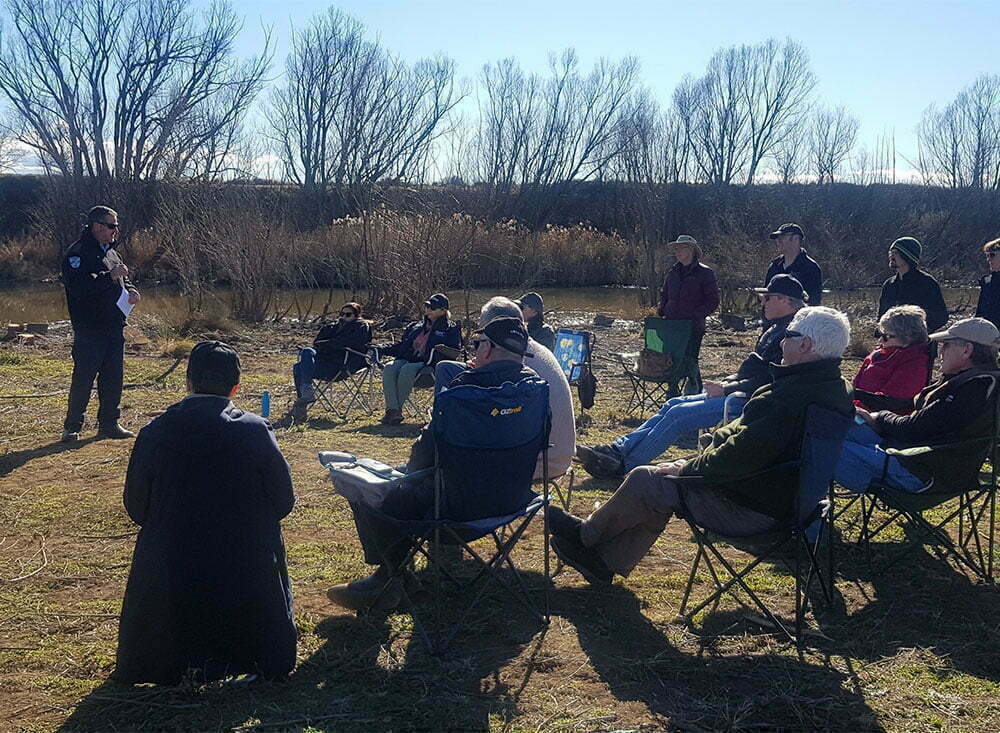Quick tips:
- A demonstration reach project needs to encompass community, environmental and recreational objectives.
- Strong community focused objectives can maximise the chances of long term uptake and ownership of a demonstration reach.
- Identify the most appropriate objectives for your particular situation. Objectives may be broad or very specific, long and short term. A benefit of a target oriented objective is that progress is measurable over time.
- Identification of clear key messages is worthwhile since it provides clarity of purpose and focus for communication approaches from the start.
- Inclusion of guiding principles, which represent statements of ‘the way we will operate’ can be valuable.
Objectives
Clarifying overall aims and objectives (or goals) is an important step in the establishment of a demonstration reach. Identifying a mix of ecological, recreational, cultural and economic objectives is worthwhile as these then form the basis from which specific actions are identified and implemented.
Recreational objectives generally focus on improving sustainable use of assets, which encompass community education and engagement. Environmental objectives specifically address the variety of threats relevant to each demonstration reach (see Whole of Life plans). Other objectives may also be included as part of planning, such as those used by the Upper Murrumbidgee demonstration reach which included governance objectives to achieve a high level of integration between those involved in the management of the reach.
Given that a fundamental premise of demonstration reaches is to enhance community awareness and support, it is essential to place a strong emphasis on identifying community objectives in the early stages. Without garnering community interest, enthusiasm and input, a demonstration reach may become another government driven project that people have a limited awareness of, rather than a model that can be followed. The community needs to understand what a demonstration reach project aims to achieve, consider why it may be relevant and of interest to them, and how they can participate.
Existing demonstration reaches have followed various approaches, and used different terminology. These are detailed in different planning documents, including Whole of Life plans and Communication and Engagement plans. Most existing demonstration reaches included broad overarching objectives such as to “demonstrate to the community the cumulative benefits of applying interventions to rehabilitate native fish habitat and populations.”
Community objectives generally encompass raising community awareness, encouraging stakeholder involvement, educating stakeholders and obtaining feedback. There is significant value in including objectives which focus on building community capacity, since this will maximise the chances of a community taking ownership of a demonstration reach in the long term.
Examples:
The Dewfish demonstration reach distinguished between informational, attitudinal and behavioural objectives within its 2012 communication plan. It also included a target orientated objective “to restore native fish populations to 60% of pre European settlement levels by 2050” (Condamine Alliance 2012). A benefit of a target oriented objective is that progress is measurable over time.
The Upper Murrumbidgee demonstration reach considered timeframe within their approach, with aspiration goals, long term and short term objectives These objectives included:
- increase awareness of activities – what is happening and what is planned in the project.
- improve community capacity to assist with management of the Reach.
- demonstrate, through education, best practice techniques for environmental rehabilitation and water use.
- improve the understanding of river ecology and fish management through communication with the community.
- develop a better understanding of the links between traditional culture and the ecology of the river and its floodplain.
- use the site as a demonstration of river rehabilitation to the broad community so that they can learn from it in undertaking their own initiatives.
The Bourke to Brewarrina demonstration reach objectives included:
- raise community awareness about the pressures that affect native fish species and the types of on-ground works required to alleviate these pressures.
- demonstrate the cumulative benefits of on-ground aquatic habitat rehabilitation for aquatic species and overall ecosystem health.
- rehabilitate native fish habitat in a degraded section of the Barwon-Darling River, to show a positive impact on fish populations.
- enable the community to continue improving the river environment after the project ends.
- contribute to the Native Fish Strategy goal of rehabilitating native fish communities to 60 % of pre-European settlement levels within the next 50 years.


Key Messages
Key messages provide the foundation for communication approaches. They represent what you want your target audience to remember about your demonstration reach project. These messages encapsulate the project, by providing clarity of purpose and focus to all involved.
When developing messages, consider who the audience includes, and ensure the messages are worded clearly and in a way people can understand and relate to. Given your audience may encompass a wide variety of groups and individuals, be mindful that the messages should adequately reflect this diversity of views and interests.
Also be mindful that a small number of clear messages is likely to be the most targeted and effective approach. Once agreed, the key messages form the foundation of communication and should be incorporated in the variety of communication tools and actions undertaken.
Not all existing demonstration reaches specifically identified key messages, however project objectives and actions framed the content of their varied communication activities.
See the examples below that showcase different messages used by demonstration reaches to date – Bourke to Brewarrina, Namoi and Hollands Creek.
Examples:
The NSW demonstration reaches (Bourke to Brewarrina and Namoi) included a variety of clear messages to appeal to a variety of audiences. These are summarised below:
- Native fish communities of the Murray-Darling Basin (Bourke to Brewarrina/Namoi) are at risk, but there are things we can do to help bring them back.
- Carrying out a range of activities simultaneously increases the benefit to fish, aquatic habitat, and river health.
- We can improve fish habitats, leading to healthier fish populations.
- If we know what the problems are, we can plan how to fix them.
- Restoring fish communities won’t happen overnight: it’s a long-term commitment.
- Native fish need the help of everyone, especially local communities that live and work around our waterways. It doesn’t matter how small you think your contribution is.
- Projects will also benefit landholders through improved on-farm management, leading to increased primary production and land value.
The Hollands Creek demonstration reach included the following key messages:
- Native fish in the Murray Darling Basin have suffered serious declines in both distribution and abundance. Management interventions can slow and reverse those declines.
- Hollands Creek has been identified as a suitable demonstration reach site, as it has several key values and should respond well to a range of river rehabilitation actions.
- Hollands Creek is home to an important population of Macquarie perch
- Arthur Rylah Institute (DSE Victoria) and the Goulburn Broken Catchment Management Authority (GBCMA) are committed to working with the community to ensure that the demonstration reach is developed as a partnership and involves the most appropriate works.
- Community input will play an important role in the rehabilitation of the site.
- The Hollands Creek demonstration reach project is designed to improve native fish populations and river health, and will not reduce visitor access.
